As a celebration (slightly belatedly) of the release of the Scroop Rilla Corset, over the next few weeks I’ll be doing a series post about the ‘ideal’ figure from 1913 to 1921 – the period covered by the Rilla corset.
I’ll be covering how the figure ideal changed from 1914 to 1921, how corsets and other undergarments were used to achieve the ideal figure and ‘correct’ the less than ideal figure, and how to wear a 1910s corset if you are ‘large above the waist’, and how to fit the Rilla to your figure.
Of course, in any era, beauty is in the eye of the beholder: what the ideal figure is depends on who is describing it, so there are lots of variations. Part of the reason I really love the 1914-1921 period is that it covers a vast range of fashionable silhouettes within that 7 year range, even within a single year, and with so many different waistlines, necklines, skirt silhouettes and overall ‘looks’, there is a mid-teens style for every body.
To start off with, a look at the range of ideal bodies from a Gossards Corset advertisement from The Designer magazine, October 1916. Gossard’s was an American corset manufacturer that heavily marketed their range of corsets for specific individual figures, with each different style of corset being designed to mould your particular type of figure into the fashionable ideal.
I’ve got quite a few Gossard’s advertisements in my magazine collection, but this one is particularly interesting as being an early example of the use of Hollywood stars to market fashion and beauty.
Here we see Gossard’s description of how each corset enhances each figure and corrects its perceived faults:
Gossard ads typically include photographs of models for each type of figure and corset:
These images have almost certainly received at least some re-touching (aka, early photoshopping) to idealise the figure even more, but give a good general idea of what actual women, albeit ideal ones, looked like in corsets of the eral
Of course, the problem with these is figuring out where your figure would sit. I could plausibly see myself falling into the Average Figure, Arched Back Figure, Large Below Waist, or possibly even the Tall Slender Figure category!

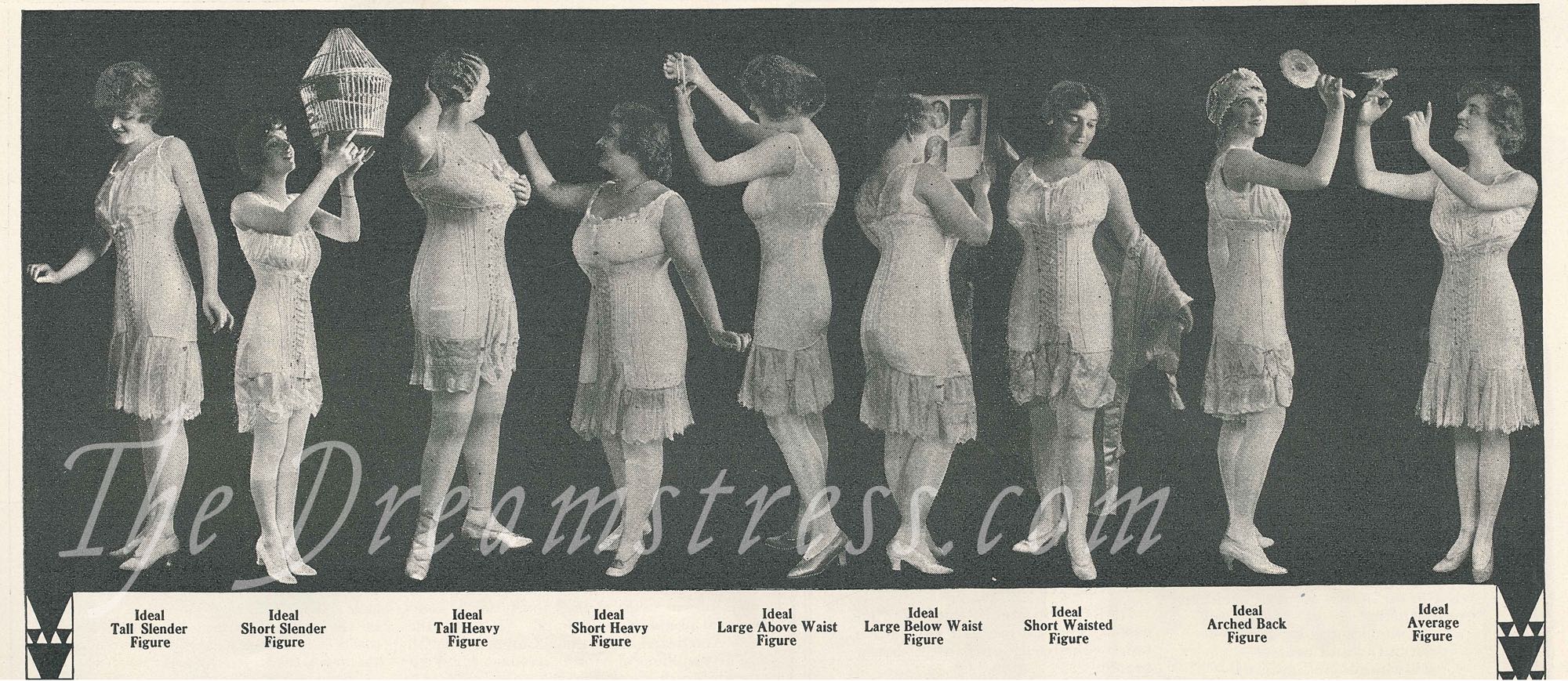
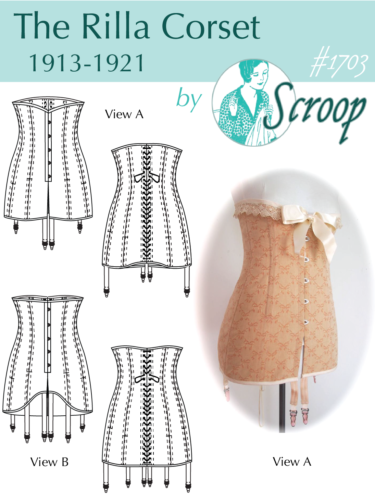
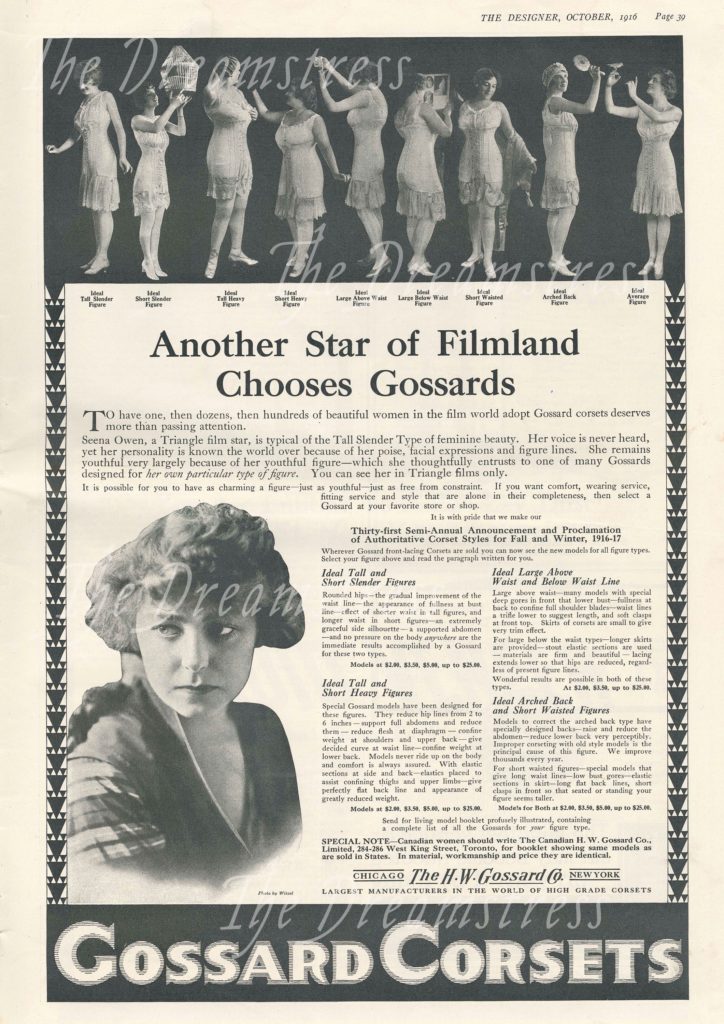
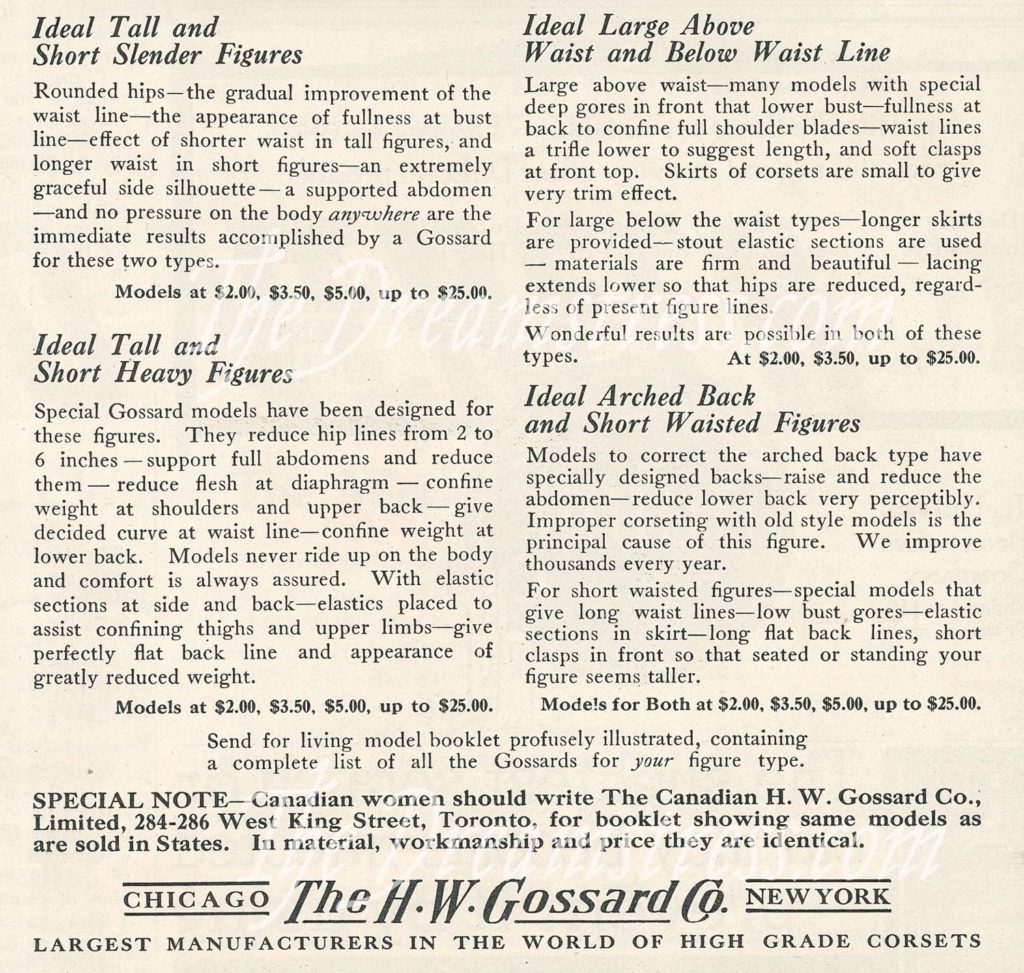
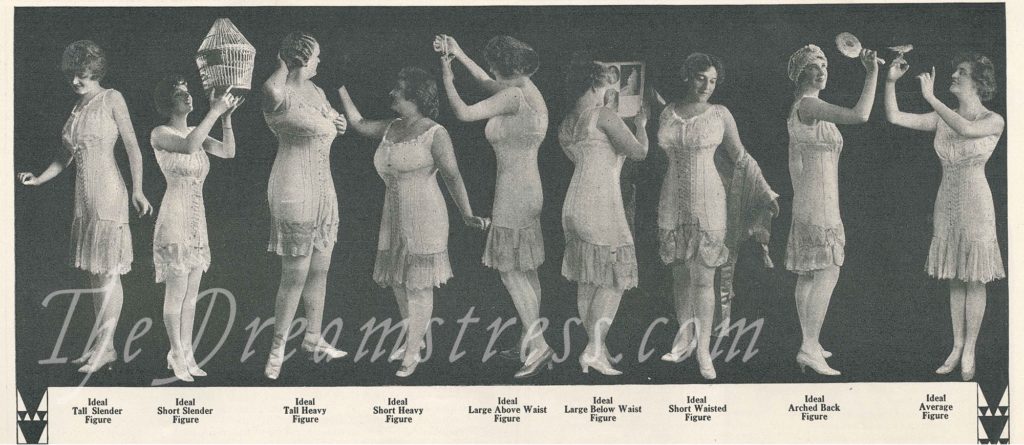
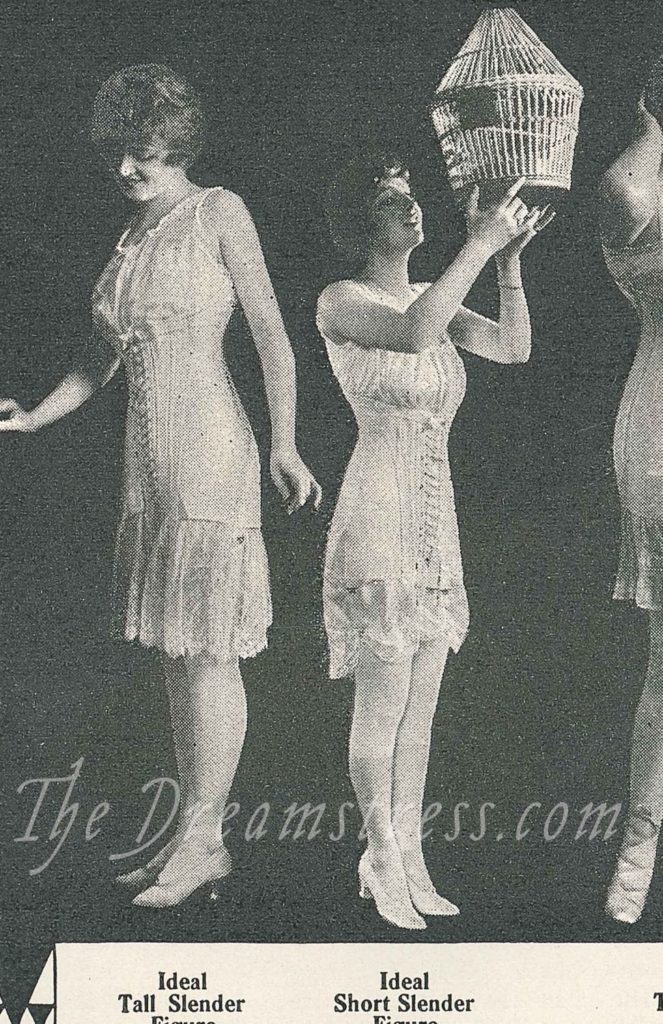

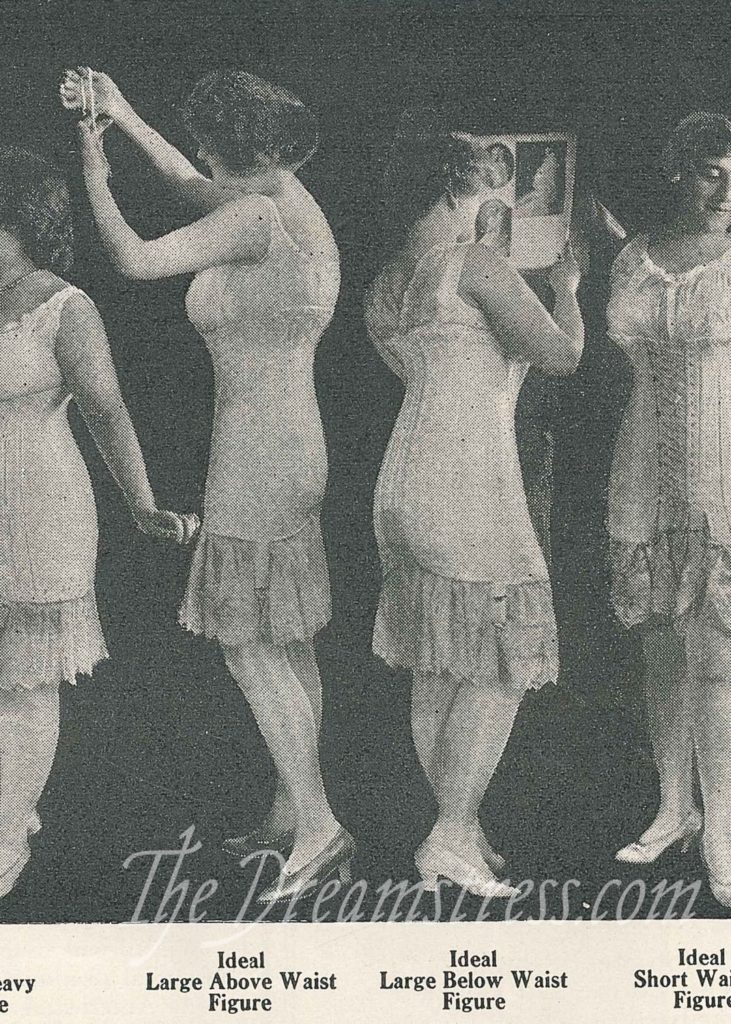
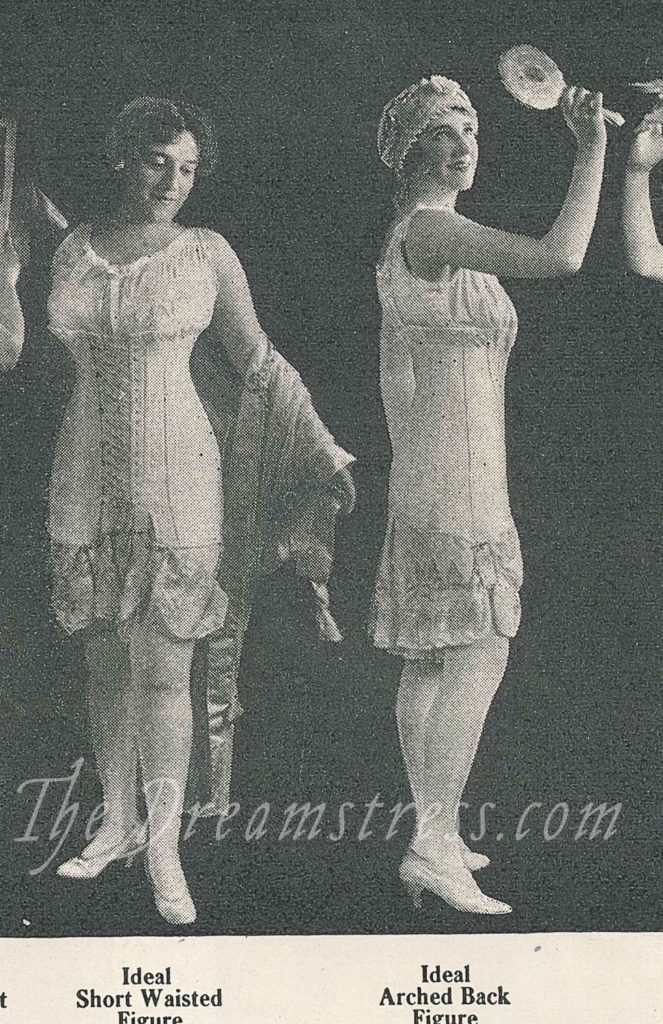
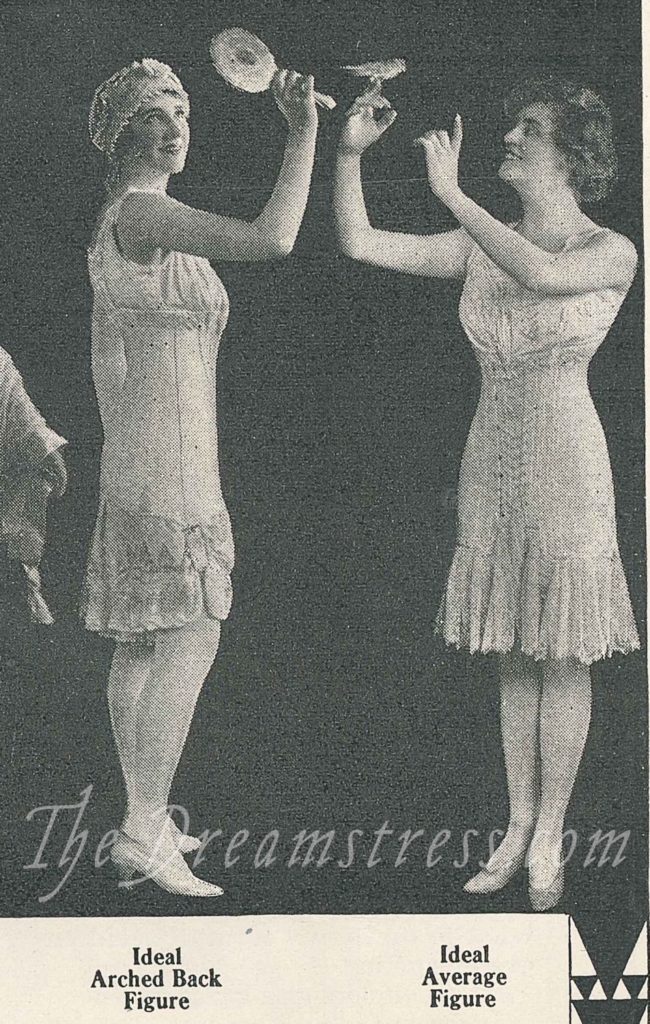
And I don’t see an ideal long-waisted short-legged figure, which is a serious impairment for my finding myself there! 😛
I rather like all these ‘ideal’ body shapes & corsets to fit!
Wish we had clothing like this to accommodate different body types today.
I’m tall, heavy, & short waisted so not sure where I’d fit in though.
Fascinating. It’s a shame they didn’t do a before and after comparison of their models, so we could see more clearly the “improvements” made by the corsets.
How did women sit in those corsets? Maybe they were so busy working on housework that they didn’t?
These are exactly the same type of corsets I wore for my Fortnight in 1916, and they are very comfortable to wear all day, and to sit in :-). Modern furniture isn’t so good for them, because our couches are made for slouching and lounging back in to, but anything period, with a straighter back, is perfectly comfortable. Part of the trick is that all of the bones end before your body curves for sitting.
I’ve always wondered… how on earth did women go to the loo while wearing a longline corset? I know combinations unbuttoned but with all that fabric and a corset that extends over the nether regions there seems a lot of potential for things to go wrong…
A lot of them are actually cut so they sit above the curve of the bottom, which helps a great deal. Other than that, the unbuttoning combinations + your petticoat actually hold everything out of the way very nicely (you lift your skirt/petticoat/combinations etc up, to form an upturned flower around your body and then nothing can get messy).. I can promise you I never had anything resembling an accident while wearing this for two weeks for the Fortnight in 1916! And when you’re not used to wearing a corset you have to use the loo every 10 minutes for the first few days you where one due to bladder compression, so there was lots of opportunity (things you never thought of…)
So it’s not just me who has to pee every 10 minutes when wearing a corset! (Worse if it is also cold!)
That poor Ideal Short Heavy Figure appears to have mislaid her hand somewhere!
I do love the range of shapes and sizes depicted here, and that every one is described upfront as “Ideal”
Hey, I’m an ideal tall, heavy!
This is interesting. I did not know back then manufacturers would make so many different sizes and shapes to accommodate woman’s bodies. I don’t know if we have so much in ready to wear in current times.
As a large above the waist lady, I wouldn’t wear any of these. There is neither bust support nor confinement. Did ladies just allow their breasts to wiggle and bounce?
That’s a very common modern misconception of 1910s fit! There is both support and confinement. The tension of the chemise under the corset holds the bust in place. It is a different feel to a modern lift bra, but numerous larger busted costumers, and friends who have modelled for me and have no other experience in historical dress, assure me that while it feels odd at first, you soon get used to it and find it very comfortable, and after a few days of wear, going back to a modern bra feels extremely painful and confining.
We get used to a certain fit and feel in our clothes, and expect that that feel is universal, but if you really pay attention to what is shown in period garments, and recreate them accurately, you find that there are different expectations of comfort, shape, and what a body should look and feel like, and we merely have one.